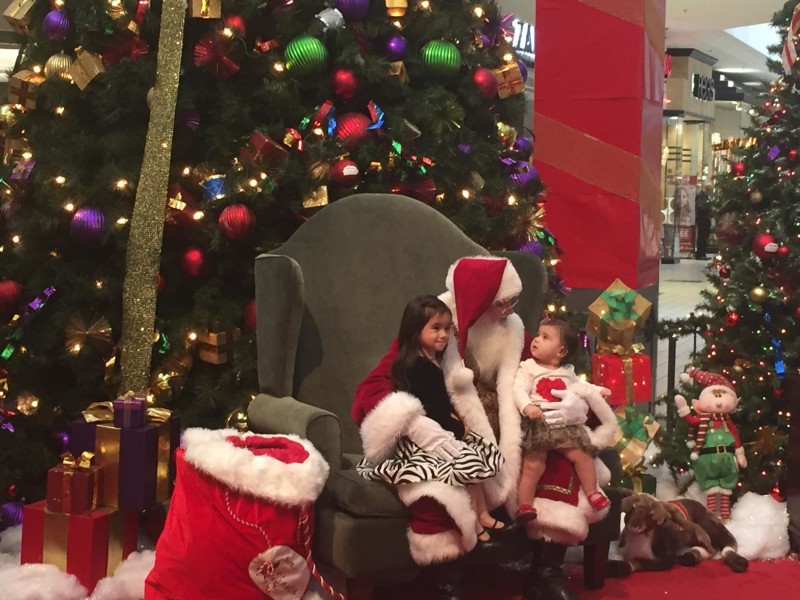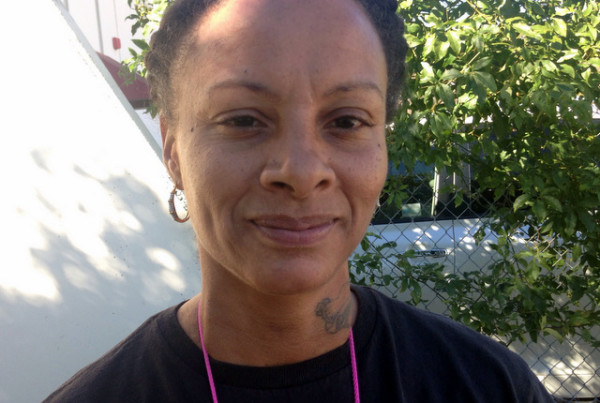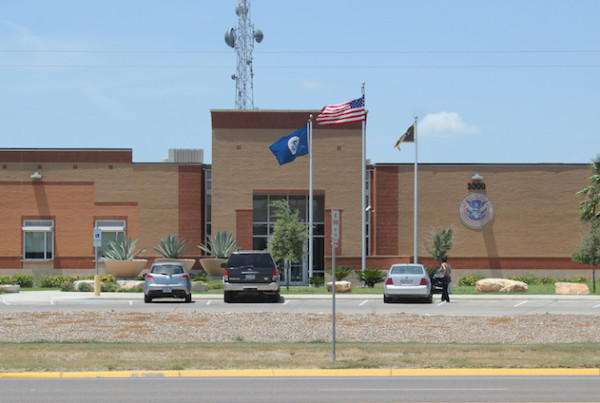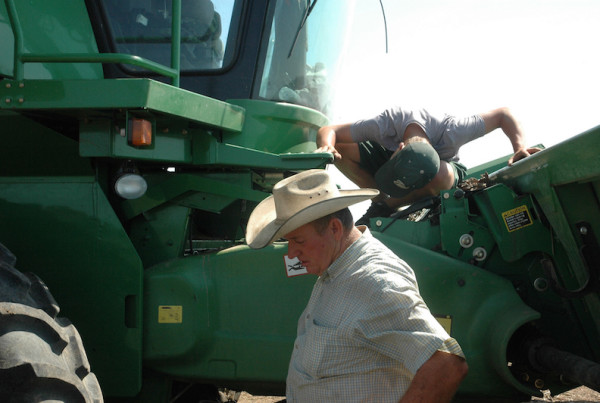This story originally appeared on Texas Public Radio.
What does Santa Claus look like?
“He has a white beard, and he’s a little chubby,” says seven-year-old Lorenzo Ortiz.
“He has a white beard. He’s got a big belly,” says Jassidy Rojas, three years old.
Both children are waiting in line to see Santa at Ingram Park Mall. The man that greeted them very much met their expectations – impeccable red suit, rosy cheeks, and of course, a white beard. But what if he had come out with a black beard?
“That’d be weird, and crazy,” says Ortiz. “I like the real Santas, with the white beard.”
Lorenzo and Jassidy’s moms say they wouldn’t mind taking their kids to see a Santa of color, and although they’re Latino, they aren’t expecting or asking for a Santa to match.
Sarah Curnutt and her two-year-old Logan are also in line. She says people should see Santa as a reflection of themselves.
“I think Santa is supposed to be an idea that envelopes the entire culture that we live in,” says Curnett. “You’ve got to teach your kids that Santa is black, Santa’s Hispanic, Santa’s white. Santa speaks all languages.”
While the Curnetts are Caucasian, mom Sarah says the only thing that would deter her from a Santa of color, is a long line.
In some homes, diverse Santas do exist. University of Texas at San Antonio Professor Howard Smith says when his daughter was young, some neighborhood kids came over to visit, “and they saw the black Santa on top of the tree and just looked at it like, what’s wrong with this picture,” says Smith.
Going to see Santa at a mainstream mall was never a big thing for the Smith family.
“There is this belief that certain human qualities are supposed to be racialized. And there’s nothing especially white or black or green about holiness or giving or generosity,” says Smith. “Not to say there aren’t good, white people, there aren’t good brown people. If the consistent model of skin color with something good is different from your child, you’re communicating there’s an absence of those good things in your community.”
So, Smith says all parents of color need to question the status quo, and the meta-narrative, that “the good, the loving, the generous is white,” says Smith. “Maybe there’s a different answer, maybe the way things are don’t have to be this way.”
While the stores are the ones booking the Santas, Smith says the burden of change also falls on the consumer.
“If you don’t insist upon a Santa that reflects you, if you’re willing to give all that up, then why should the broader society take you into account? If you settle for something that doesn’t represent you, that’s what you’re going to get,” says Smith.
Timothy Connaghan, or Santa Tim, owns the Kringle Group – one of the largest Santa training programs, and a Santa booking agency. He’s also the national Santa for the Marine Corps and Toys for Tots.
“Many children are brought up seeing a caucasian Santa with a white beard,” says Connaghan.
The founder of the Texas group Lone Star Santas says there are a handful of Latino members across the state. And anyone who can pass the background check and have some Christmas spirit, should become a member, too. But Santa Tim says there’s a notable Latino Santa in Los Angeles, in Atlanta, a notable African-American Santa. Yes, he even books Jewish Santas.
“The most conscientious shopping malls and shopping centers are the ones that do try to match a Santa to fit their whole customer base,” says Connaghan, “and address the needs of all the individual groups in between.”
He says there’s a big trend to employ bilingual elves and Mrs. Clauses. Half of the helpers at Ingram Park Mall were bilingual, and said those skills are crucial with working with customers every day.
Santa Tim says absolutely anyone can be Santa.
“It’s not what you look like, it’s not the beard, it’s not the suit, it’s not even having a bowl full of jelly,” says Connaghan, “it’s what’s in your heart.”















